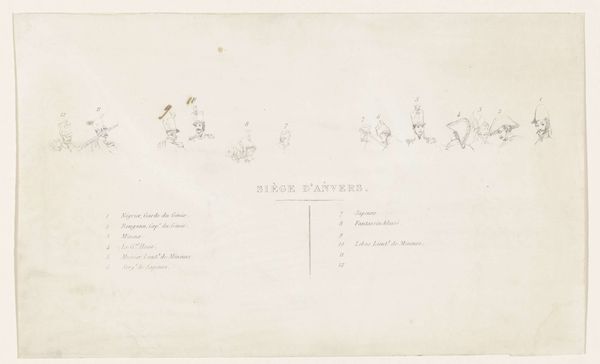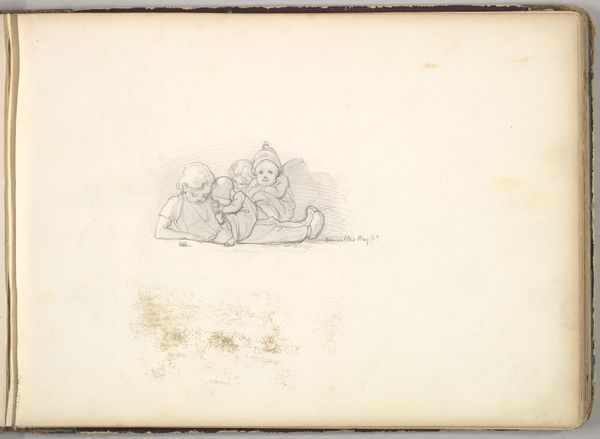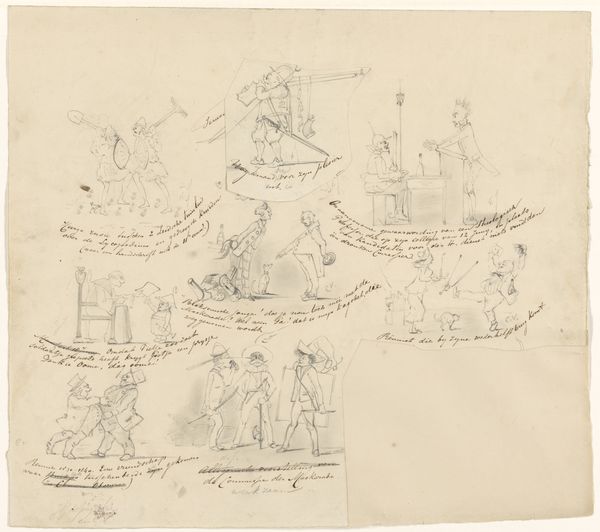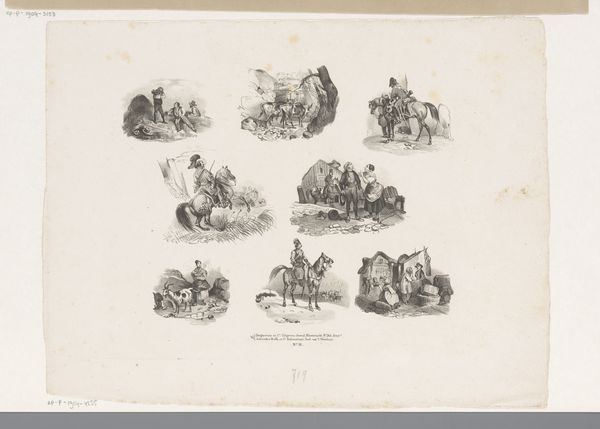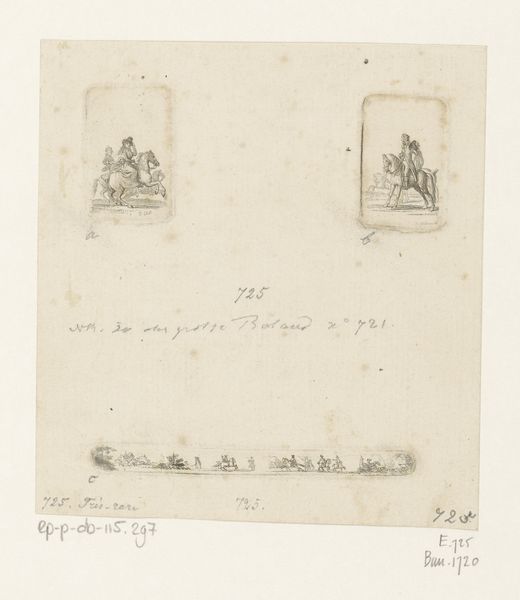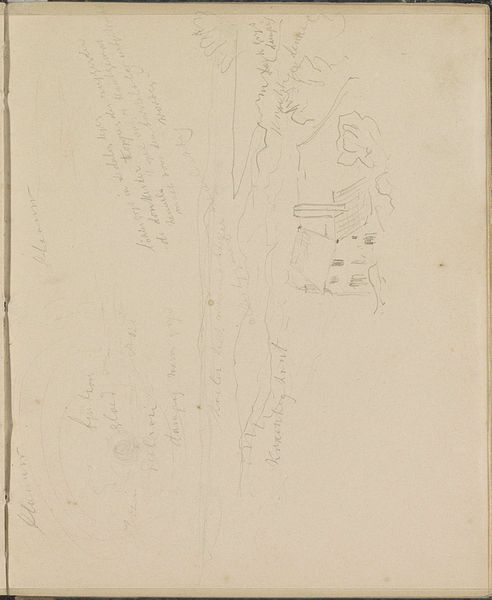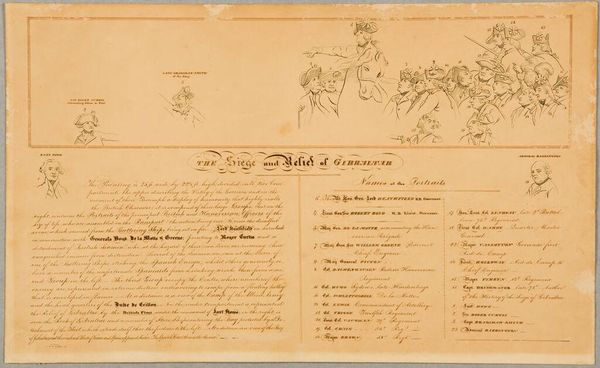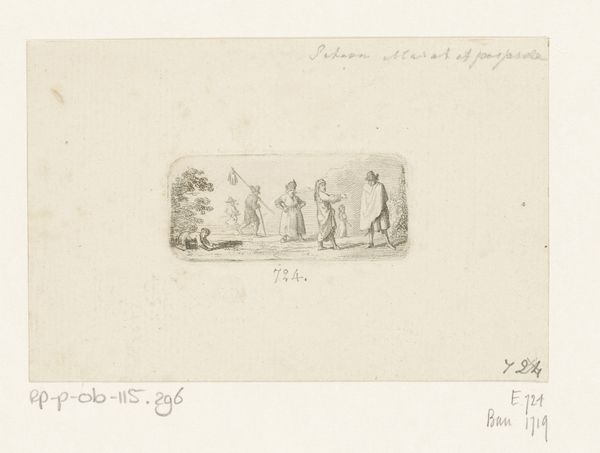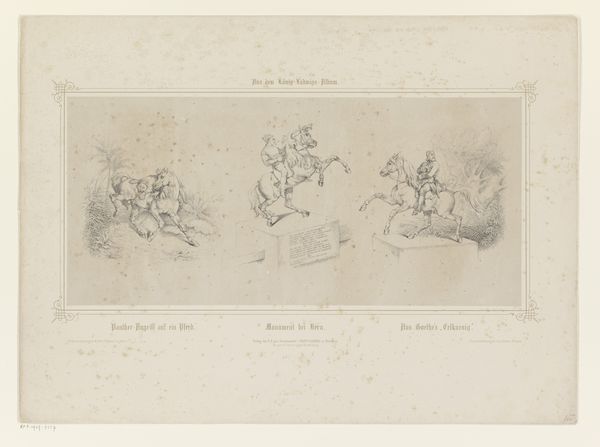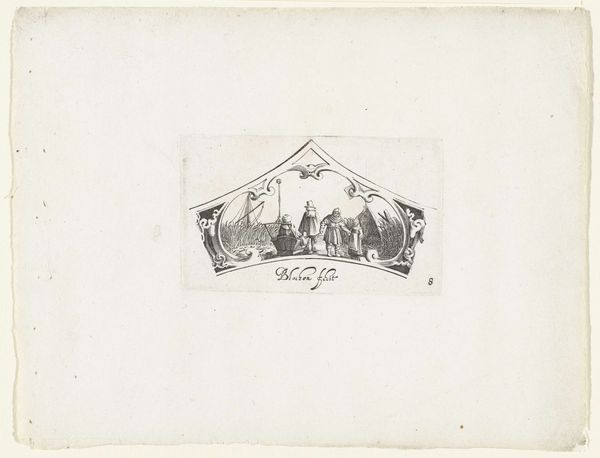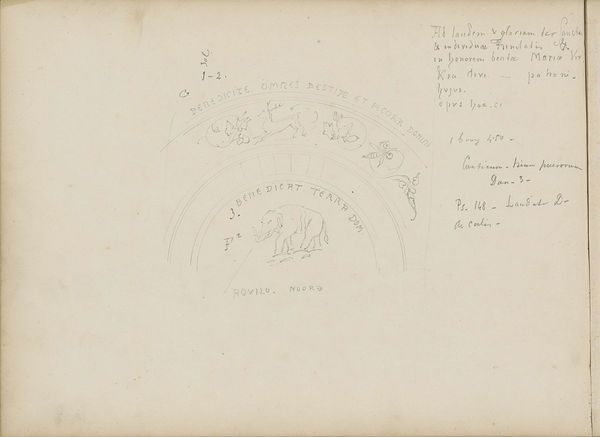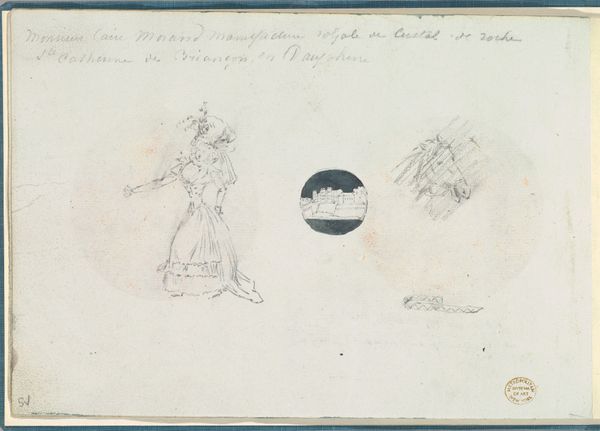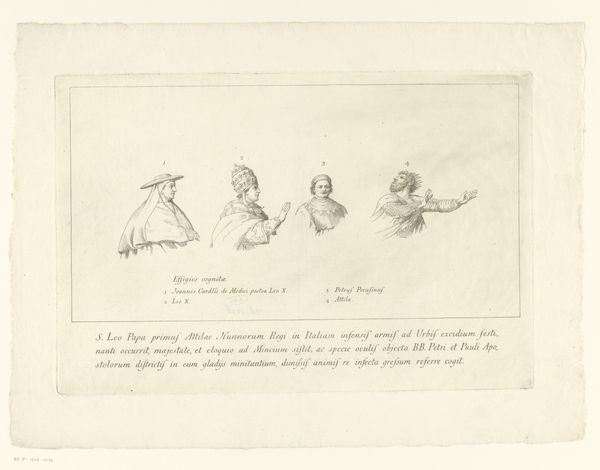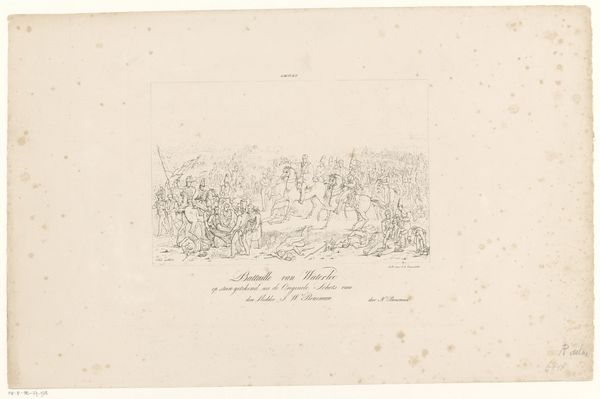
Sleutel bij de prent van het Franse leger op de veroverde lunet van Saint-Laurent, 15 december 1832 1832 - 1833
0:00
0:00
drawing, print, pencil
#
portrait
#
drawing
# print
#
pencil
#
history-painting
Dimensions: height 180 mm, width 295 mm
Copyright: Rijks Museum: Open Domain
Curator: I would argue the seemingly ephemeral nature of the sketches in Jean Pierre Marie Jazet’s “Sleutel bij de prent van het Franse leger op de veroverde lunet van Saint-Laurent, 15 december 1832” serves to emphasize the material and labor behind image making in this period. Editor: This is a print from the 1830s made with pencil on paper and is currently housed at the Rijksmuseum. I’m intrigued by the delicate lines of these figures, so wispy, like captured moments. What's striking to you about this piece? Curator: I see a fascinating interplay between high art and functional reproduction. Jazet made this drawing to key the names to a print of a military scene. The pencil marks, the numbering, even the rough rendering – all point to the labor of crafting an image for mass consumption. This was a work for instruction, not a piece that necessarily required a level of aesthetic "polish", or so it was perhaps presumed. Editor: I see your point about the mass production and labor. It's easy to forget that even seemingly "simple" prints involved skilled craftsmanship. But wouldn't a painter, a critic, or patron have seen this as lesser than an oil painting hung on the wall? Curator: Exactly! It invites us to question what constitutes "art" and what dictates value. The materials—pencil, paper, printing press—and the socio-economic context—the burgeoning print industry, French military power, the networks of laborers—they all factor into how we should look at Jazet's drawing. Consider the market for these prints – were they aimed at an elite audience familiar with art world hierarchies, or a wider population keen to participate in constructing French identity and political solidarity? Editor: This definitely gives me a new way to appreciate prints, moving beyond just looking at the aesthetic and really considering the material conditions that allowed it to be made. Curator: And that's the goal, isn't it? Art isn't just about pretty pictures but about production, consumption, and ultimately, our understanding of societal structures.
Comments
No comments
Be the first to comment and join the conversation on the ultimate creative platform.
